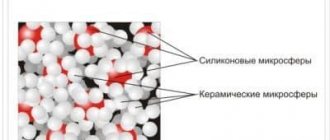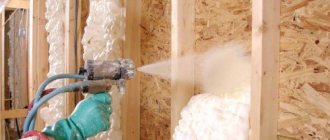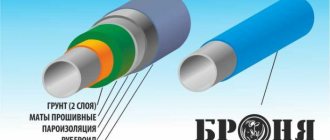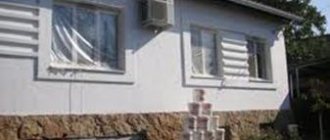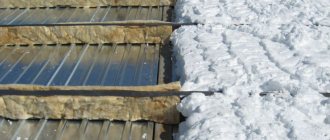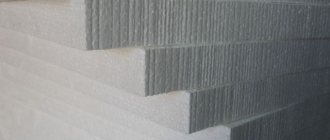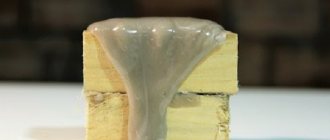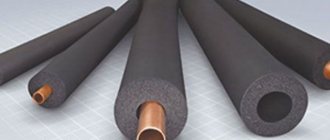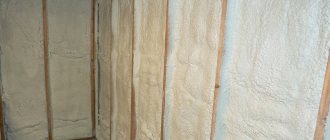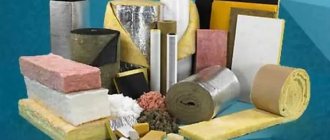One of the important measures to improve the energy efficiency of a home is insulating the building facade. Until recently, this procedure was very labor-intensive and required many technical measures. Now the task has been simplified due to the emergence of innovative insulation materials on the market. The thermal insulation of Bronya is several times superior in parameters to mineral wool and polystyrene foam, but at the same time its application to the surface can be done with minimal effort, time and available means.
What is Bronya thermal insulation?
Armor is a liquid thermal insulation containing ceramic microgranules. The
“ultra-thin thermal insulation” coating is a substance similar in appearance, application method and structure to paint. This mastic contains the following components:
- basic acrylic binder, in proportion – 5 parts of the total mass;
- polymer fixatives;
- catalytic agents;
- filler made of microspheres, in a proportional ratio of 4 parts of the total mass, is of ceramic origin with micro-thin walls and rarefied air inside (up to 80% rarefied).
The structure contains antiseptic and anti-corrosion additives as auxiliary components.
Bronya heat-insulating paint is often produced in the form of a white suspension, which, after hardening on the surface, creates a dense film with a matte tint. The material is elastic to the touch, and in terms of the quality of its interaction with the environment, it is resistant to all types of impact. The thermal insulation effect is due to the inability of the rarefied air limited in the sphere to conduct thermal energy (the principle of vacuum space).
Initially, ceramic-type thermal insulation was planned to be used for the space industry.
Advanced technologies to protect consumer interests
Liquid ceramic coating Bronya is an ultra-thin thermal insulation, which contains several components:
- acrylic binder base;
- clamps;
- catalysts;
- vacuum ceramic microspheres with ultra-thin walls;
- anti-corrosion and anti-fungal additives.
The technological combination of the listed elements results in liquid thermal insulation, characterized by low weight, ductility and good adhesion. The quantitative ratio of microspheres and binding components of 4:1 significantly minimizes the possible loss of heated air. Low thermal conductivity is ensured by rarefied gas (vacuum).
The consistency is similar to regular white paint. After drying, a thin polymer film with a uniform matte structure appears on the treated surface. The finished coating is characterized by reliable resistance to sudden temperature fluctuations, high humidity and atmospheric influences of any nature.
Types of liquid insulation
Types of thermal insulation depending on the purpose
The manufacturer offers several modifications of the product. Each type of composite has a base base and certain additives depending on the purpose of the paint. Options for insulating facades differ from each other in terms of climatic design, where for more severe regions, composites have been developed that are designed for a greater number of cycles of exposure to negative temperatures. Specialized mixtures are more focused on protection against moisture, fungal elements and fire.
Base Coats
The following brands of mastics are produced under the basic ones:
- Classic NG, Classic;
- Facade NG, Facade;
- Anticorrosive;
- Winter NG, Winter.
These are standard modifications of the heat insulator for operation at positive and negative temperatures.
Budget coverings
Thermal insulation for metal pipes is cheaper, but has lower quality characteristics.
Brands of budget composites are represented by the following options:
- Universal NG, Universal;
- Wall NG, Wall;
- Metal;
- Nord NG, Nord.
A series of analogues of basic brands has lower performance indicators and a smaller price niche.
Specialized thermal insulators
Modifications of specialized mixtures:
- Standard NG, Standard;
- Light NG, Light;
- Fire protection Nord, Fire protection;
- Volcano.
Thermal insulation coatings have additional properties.
Methods of working with liquid thermal insulation
To reduce paint consumption, surfaces must be perfectly leveled, degreased and primed. The consistency of the paint has the appearance of liquid sour cream or paste; too thick a composition can be diluted with water. Liquid thermal insulation is applied in several ways:
- With a spray gun.
- With a roller.
- With a brush.
It is better to paint larger surfaces using a spray gun; this will even out the thickness of the layer and reduce paint consumption. When painting interiors, it is easier to use a roller; it is better to paint small parts with a brush.
The minimum layer thickness is 0.4 mm, 2-3 layers are applied per dried previous layer. liquid heat insulators for wall insulation are environmentally friendly, do not emit harmful substances, are safe, and have a flammability group of G1 - low-flammability.
Painting work can be carried out at temperatures down to -10°C, although a type of heat-insulating paint - Bronya Zima heat-insulating paint - allows work to be carried out down to -35°C.
The compositions can be tinted with acrylic or mineral (depending on the base) pigments in any desired color.
Characteristics of insulation paint Bronya
The composition of the thermal insulation is clearly visible only with an electron microscope.
The developer has endowed the product with the following properties:
- the mass has a uniform white structure;
- the composite has a density of 0.558 g/cm3;
- the structure contains non-volatile substances in a mass ratio of 44%;
- vapor permeability for grades of façade mastics – 0.013 Mg/m h Pa;
- heat transfer coefficient – 1.380 W/m, degrees Celsius;
- thermal conductivity coefficient – 0.0012 W/m, degrees Celsius;
- resistance of the film to water and alkali during the day - the film retains its appearance;
- exposure to negative temperatures over 50 cycles – the film retains its properties;
- adhesion with concrete – 1.33 MPa, with steel – 2.20 MPa, with brick – 2.04 MPa;
- resistance to high temperatures up to 200 degrees Celsius - the film retains its integrity and properties.
The substance in question is not a flammable material and a medium for flame propagation.
Positive and negative qualities of mastic
1 mm of liquid thermal insulation replaces a 5 cm layer of mineral wool.
Positive properties that Bronya insulation has:
- A thin layer of mastic one millimeter can replace mineral wool 5 cm thick.
- The product is universal - it is a heat insulator, an anti-corrosion agent and a kind of antiseptic.
- The paint is easy to apply with a regular roller, brush or using a fine spray unit.
- A wide range of operating temperatures allows the material to be used in any climate zone.
- The mass of the thermal insulator is negligible and does not exert any load on the supporting structure.
- The mastic has excellent adhesion to any type of surface (with the exception of oily and greasy surfaces).
- The paint does not absorb moisture and is stable against ultraviolet radiation.
- The coating is elastic, can withstand light loads and has good maintainability.
As an example of the negative qualities of insulation, one can indicate its high cost, reaching up to 1000 rubles per liter of paint, the drying period of at least a day and the inability to work as a thermal insulator at ambient temperatures below +7.
Operating principle
As we remember from school physics lessons, heat transfer occurs in three ways: conduction, convection and radiation. Thermal paint consists of 20% components capable of conducting heat, this applies to thermal conductivity.
Convection losses are negligible thanks to the filler in the form of balls, the structure of which does not transfer heat. Moreover, these ingredients reflect and dissipate heat, which means they do an excellent job of radiating radiation. As practice shows, over 90% of thermal energy does not escape from the room, which indicates the high efficiency of Bronya paint.
Scope of application of the suspension
Liquid thermal insulation is suitable for exterior finishing work
Bronya brands of liquid insulation effectively insulate the following elements of a house’s structure:
- external walls of any configuration before finishing work;
- simple and complex roofs both on the outside and in the attic;
- walls of loggias and balconies from the inside;
- concrete floor surface.
The coating has proven itself well in creating thermal insulation on boiler equipment, cold and hot water supply lines, centralized steam pipelines and heating mains, in air conditioning systems on air ducts, insulating public and private vehicles, refrigerators, trailers, various tanks and containers, as well as marine transport. Often, the method of applying paint to cold water pipelines is used to get rid of condensation that falls on them.
Liquid thermal insulation, waterproofing, fire protection "ARMOR"
Welcome to the website of NPO "BRONYA" - a developer and manufacturer of liquid thermal insulation, waterproofing, fire protection, primers, as well as other special coatings of the "BRONYA" series!
We have extensive experience in the development, production and implementation of innovative building materials, giving them the status of standard and traditional, but our main focus is the production of liquid ceramic thermal insulation coatings of the “ BRONYA ” series.
Which insulation to choose?
We bring to your attention liquid thermal insulation “ARMOR” , which is superior in its thermophysical properties not only to alternative insulation materials, but also to well-known similar liquid thermal insulators. In addition, the material has various modifications that allow it to be used under different conditions and on different surfaces, which greatly simplifies the solution of a wide variety of tasks and problems.
What is liquid thermal insulation "Armor"?
“Bronya” insulation is a suspension that looks like white acrylic paint, which can very easily be applied to any surface with a regular brush or airless sprayer. After the material has completely dried and polymerized, a coating is formed that , compared to other types of insulation, has unique thermal insulation properties .
So, just 1 mm of the “Armor” coating corresponds in thermal conductivity to a layer of mineral wool 50-60 mm thick.
In addition, the Bronya series coatings have anti-corrosion properties, protect against burns, and also perfectly solve the problem of condensation on various surfaces.
What can be insulated with Bronya thermal insulation? The Bronya series coatings can be used to thermally insulate facades , roofs , internal walls , and concrete floors . The material very quickly and easily copes with condensation on plastic windows. Liquid ceramic thermal insulation is the only option for insulating the facades of buildings of architectural and historical value. With Bronya thermal insulation you can completely insulate a balcony or loggia simply by painting the walls from the inside. Bronya coatings also thermally insulate boilers , pipelines (hot and cold water supply), heating mains , pipelines , air conditioning ducts, cooling systems , various containers and tanks , trailers , refrigerators , vehicles , sea and river vessels . The material is also used to eliminate condensation on cold water supply pipes and reduce heat loss in accordance with SNiP in heating systems. Recently, HOAs have begun to use the material very often to combat the formation of icicles on the roofs of apartment buildings.
Why choose Bronya liquid thermal insulation? Our company was founded in 2007. Today in Russia we are represented by 245 dealer centers. The quality and reliability of Bronya were appreciated by consumers in all regions of our country from Kaliningrad to Sakhalin and from Sochi to Murmansk. Bronya liquid thermal insulation is also represented by distribution centers in Belgium, Hungary, Serbia, the Czech Republic, Bulgaria, Poland, Romania, Belarus, Ukraine, Kazakhstan, Lithuania, Estonia, Latvia, Latin America, South Korea, Vietnam and other countries. Over many years of operation, our company has accumulated invaluable experience, which we are always happy to share with you. Over the course of many years, our technical specialists have developed and launched into production several types of liquid thermal insulators, and therefore the Bronya product can be considered the latest and most advanced stage in the development of liquid ceramic thermal insulating coatings. Our own Modern production of innovative developments and modifications of Bronya heat insulators, with numerous confirmed tests of all declared physical and thermophysical parameters, an impressive set of certificates, permits and, of course, an unsurpassed team of technical specialists - this is what distinguishes us from numerous “catching up”. Modifications of the “Bronya” heat insulator make it possible to carry out work on thermal insulation of objects at temperatures from – 60 C to + 250 C. The service life of thermal insulation coatings of the “Bronya” series is from 15 years.
| Thermal insulation of tanks, tanks and containers | Thermal insulation of steam pipelines, water pipes and heating mains |
| Thermal insulation of trailers, carriages and other vehicles | Thermal insulation of industrial equipment |
